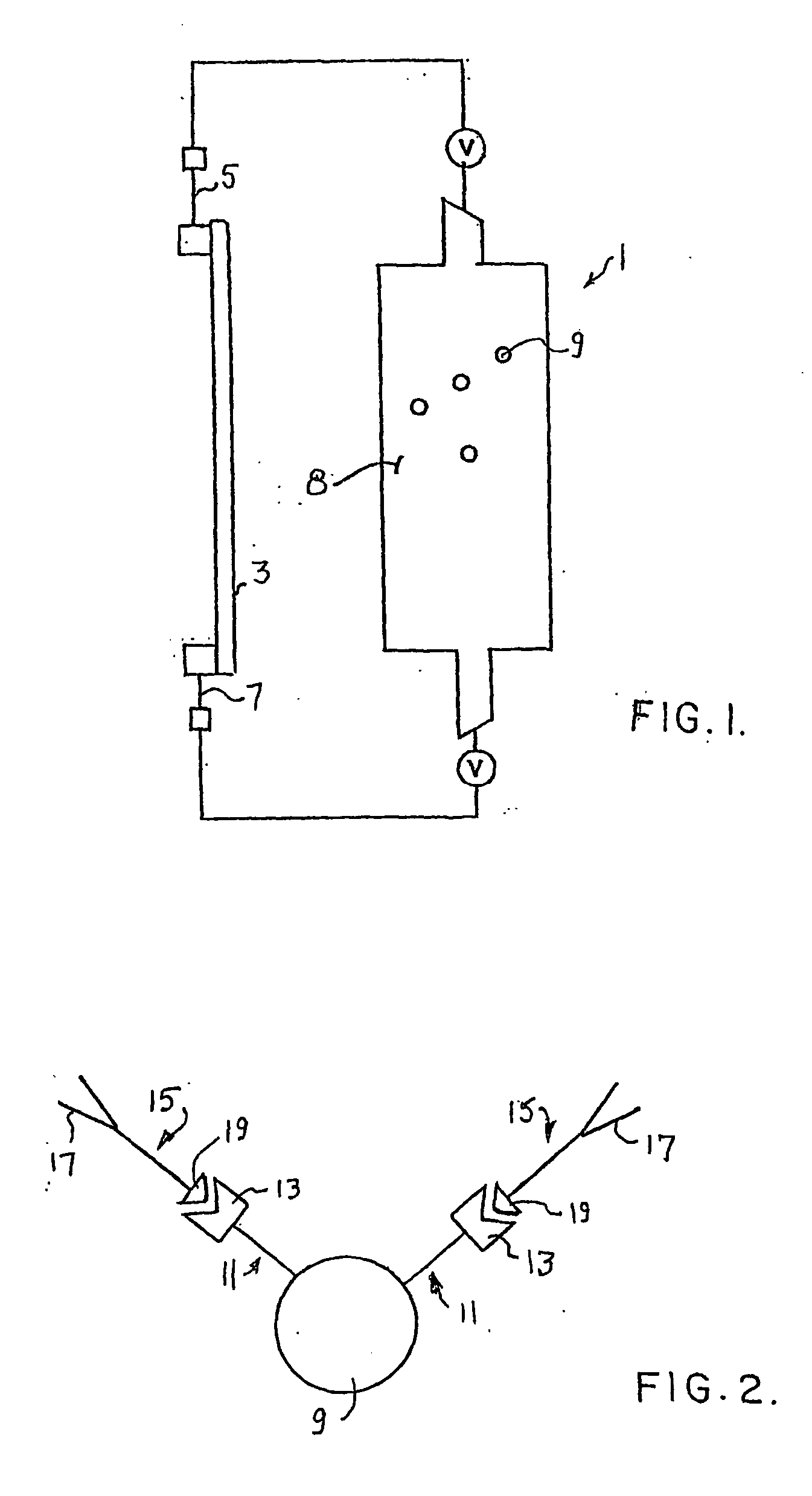Methods and devices for targeting a site in a mammal and for removing species from a mammal
a technology of a site and a mammal, applied in the field of targeting ligands to a site in an organism, can solve the problems of inherent methods known to date, and achieve the effects of sufficient stabilization, reduced mortality from disease episodes, and increased morbidity and mortality
- Summary
- Abstract
- Description
- Claims
- Application Information
AI Technical Summary
Benefits of technology
Problems solved by technology
Method used
Image
Examples
example 1
Step One of Extracorporeal Removal of CA-NAB, and / or NAB and / or ATAA Prior to Administration of TAB-VL or TAB-TL
[0097] Protein A-Sepharose® CL-4B obtained from Pharmacia LKB Biotechnology and swollen and washed in accordance with the instruction (Affinity Chromatography. Principles and Methods, Pharmacia Biotechnology Pub., 1991), is packed in a column. Preferably the column used is the commercially available Immunosorba®) sold by Fresenius HemoCare Inc. Redmond, Wash. The column requires the use of a plasma separator, as is well known and as recommended by the manufacturer: either a “centrifuge” type, such as Fresenius AS 104 cell separator, Cobe IBM 2997 or membrane type plasma separator, such as Kaneka Sulfox® or Cobe TPE® can be used to separate, on line, the patient's plasma from the cellular elements of blood. While the Immunosorba® column is preferred in some applications, other Protein A Adsorption columns can be used instead. When regeneration is preferred a system includi...
example 2
[0107] This Example is identical to EXAMPLE 1 above, except that the Step 3 of ECA of TAB-bound 111 In NB-EEDTA-111 In, or free 111 In is omitted.
example 3
[0108] This Example is identical to EXAMPLE 1, except that the ECA column is a Protein A (or Protein G) column and wherein no antibodies are used as adsorbents (the adsorbent is the Protein A or Protein G itself covalently bound to the matrix) and wherein the Adsorbed Species is a species which has affinity to Protein A (or Protein G), such as for example ATAA, NAB, TAB and any other Adsorbed Species that has affinity to Protein A or Protein G. IN this EXAMPLE 3, an additional Step can optionally be added, prior to Step 1 of ECA, in order to increase the affinity of the adsorbent Protein A, (or protein G) used in the EXAMPLE, and when the Adsorbed Species is ATAA, monoclonal antibodies specific to the ATAA, (anti idiotypic antibodies to the FV binding site of ATAA), are administered to the treated subject. The production of monoclonal anti idiotypic antibodies to ATAA, are well known to those skilled in the art, as ATAA is a complete antigen. While use of monoclonal antibodies, pref...
PUM
| Property | Measurement | Unit |
|---|---|---|
| Acidity | aaaaa | aaaaa |
| Biological properties | aaaaa | aaaaa |
| Immunogenicity | aaaaa | aaaaa |
Abstract
Description
Claims
Application Information
 Login to View More
Login to View More - R&D
- Intellectual Property
- Life Sciences
- Materials
- Tech Scout
- Unparalleled Data Quality
- Higher Quality Content
- 60% Fewer Hallucinations
Browse by: Latest US Patents, China's latest patents, Technical Efficacy Thesaurus, Application Domain, Technology Topic, Popular Technical Reports.
© 2025 PatSnap. All rights reserved.Legal|Privacy policy|Modern Slavery Act Transparency Statement|Sitemap|About US| Contact US: help@patsnap.com

